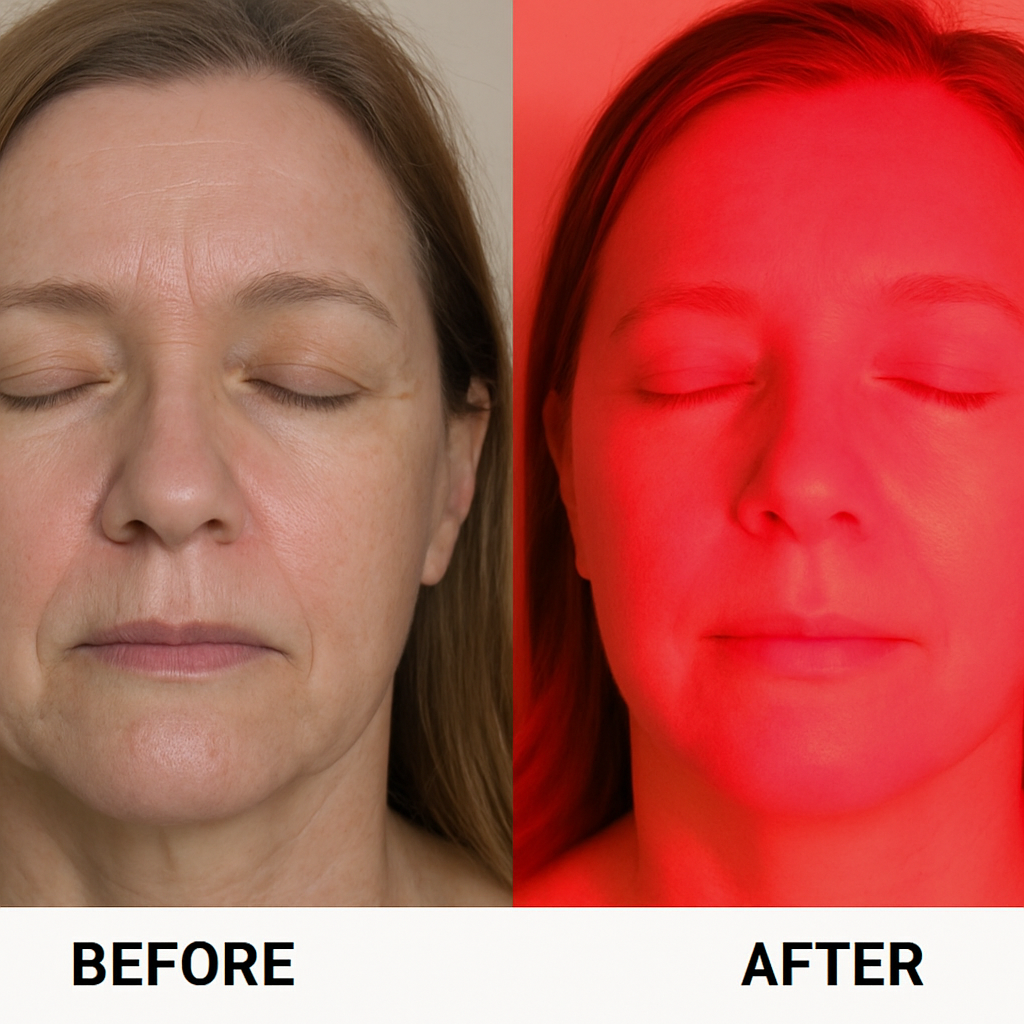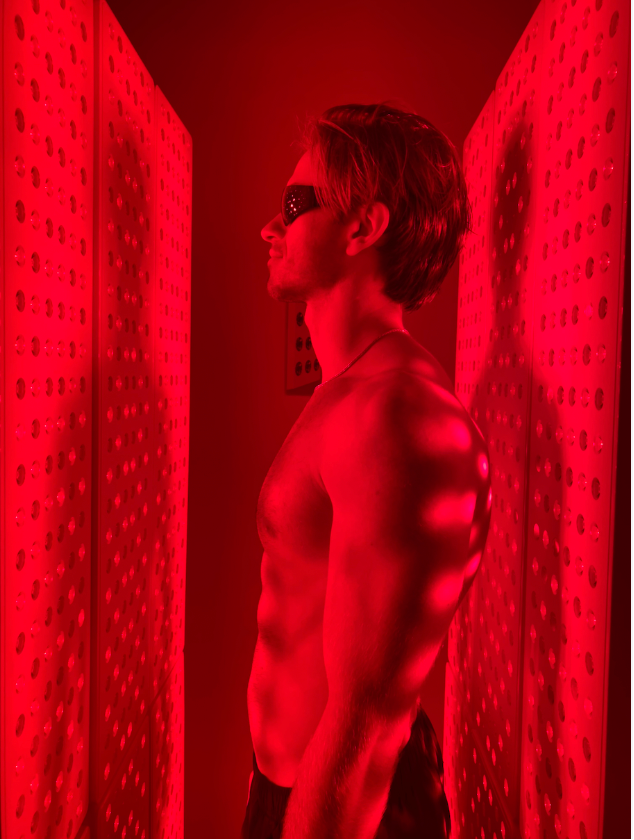Benefits of Red Light Therapy Explained
Red light therapy is rapidly emerging as a popular non-invasive treatment option, acclaimed for its diverse range of benefits. From revitalizing skin to alleviating pain, this therapy presents a natural method to enhance healing and overall well-being. But what precisely is red light therapy, and in what ways can it benefit you? In this article, we’ll delve into the advantages of red light therapy, explore the before and after effects, and discuss how to locate “red light therapy near me.”
Red light therapy, often referred to as low-level laser therapy (LLLT) or photobiomodulation, involves the exposure of skin to low levels of red or near-infrared light. Unlike ultraviolet (UV) light, which can be harmful to the skin, red light therapy is safe and penetrates the skin without causing damage. It functions by stimulating the mitochondria, the powerhouse of cells, to produce more energy. This energy boost aids cells in repairing and rejuvenating themselves, leading to various health benefits.
Mechanism of Action
Red light therapy works by utilizing specific wavelengths of light to penetrate the skin and promote healing. This light reaches deep into the skin, targeting the cells and encouraging them to produce more adenosine triphosphate (ATP), the energy currency of cells. This boost in cellular energy enhances cell function, accelerates healing, and reduces inflammation.
Safety Profile
One of the appealing aspects of red light therapy is its safety profile. Unlike other light-based treatments, it doesn’t emit harmful UV rays, making it suitable for regular use. The therapy is non-invasive and painless, with minimal risk of side effects, making it accessible to a wide range of individuals seeking therapeutic benefits.
Historical Context
The roots of red light therapy can be traced back to the early 20th century. However, it wasn’t until recent decades that advancements in technology allowed for its widespread use in therapeutic settings. Initially used in clinical environments, the availability of home devices has democratized access, allowing individuals to experience its benefits conveniently.
The Science Behind Red Light Therapy
Red light therapy operates on the principle of using specific wavelengths of light to penetrate the skin and promote healing. The light penetrates deep into the skin, reaching the cells and encouraging them to produce more adenosine triphosphate (ATP), the energy currency of cells. This increase in cellular energy enhances cell function, accelerates healing, and reduces inflammation.
Cellular Regeneration
One of the primary benefits of red light therapy is its ability to promote cellular regeneration. By boosting ATP production, red light helps cells repair damage more efficiently. This is particularly beneficial for skin health, as it can reduce the appearance of fine lines, wrinkles, and scars.
Skin Health and Appearance
Red light therapy’s ability to enhance cellular regeneration translates to visible improvements in skin health. The increased ATP production promotes collagen synthesis, which is crucial for maintaining skin elasticity and reducing signs of aging. Regular sessions can result in smoother skin texture and a reduction in age-related blemishes.
Wound Healing and Repair
Beyond aesthetic benefits, red light therapy aids in wound healing and tissue repair. By accelerating cellular processes, it supports faster recovery from cuts, burns, and other skin injuries. This makes it a valuable tool in post-surgical recovery and for individuals with chronic wounds.
Impact on Hair Growth
Interestingly, red light therapy has shown promise in promoting hair growth. By stimulating follicular cells and improving circulation to the scalp, it can help combat hair thinning and promote thicker, healthier hair. This emerging application is garnering attention in the field of dermatology and trichology.
Inflammation Reduction
Red light therapy is known for its anti-inflammatory effects. By reducing inflammation, it can alleviate chronic pain, improve joint health, and enhance recovery from injuries. This makes it a popular choice for athletes and individuals with arthritis or other inflammatory conditions.
Mechanisms of Inflammation Reduction
The anti-inflammatory effects of red light therapy stem from its ability to modulate cytokine activity and reduce oxidative stress within cells. By influencing these biological processes, it helps diminish inflammation at the cellular level, offering relief from pain and swelling.
Applications in Sports Medicine
Athletes frequently utilize red light therapy to manage inflammation associated with sports injuries. Its ability to reduce swelling and promote rapid recovery is beneficial for maintaining peak performance and minimizing downtime due to injuries.
Role in Autoimmune Conditions
For individuals with autoimmune disorders, where inflammation plays a key role, red light therapy offers a complementary approach to managing symptoms. By incorporating regular sessions, patients often experience reduced flare-ups and improved quality of life.
Red Light Therapy for Skin Health

Many people turn to red light therapy for its skin-rejuvenating benefits. Here’s how it can improve your skin:
Anti-Aging Effects
Red light therapy stimulates collagen production, which is essential for maintaining skin elasticity and reducing the appearance of wrinkles. Regular sessions can lead to smoother, firmer skin and a more youthful appearance.
Collagen and Elastin Production
Collagen and elastin are vital proteins responsible for skin firmness and elasticity. Red light therapy aids in boosting their production, helping to counteract the natural aging process that leads to sagging skin and wrinkles. Over time, users notice a marked improvement in skin texture and resilience.
Reversing Sun Damage
Prolonged sun exposure can lead to premature aging and damage to the skin. Red light therapy assists in reversing the effects of sun damage by encouraging cell repair and regeneration. This results in a more even skin tone and a reduction in sunspots and pigmentation.
Long-term Benefits
Consistency is key in achieving long-term anti-aging benefits with red light therapy. Over extended periods, users report sustained improvements in skin appearance, maintaining a youthful glow and reduced signs of aging without invasive procedures.
Acne and Scar Treatment
By reducing inflammation and promoting healing, red light therapy can help clear up acne and minimize scarring. It targets the sebaceous glands, reducing oil production and preventing future breakouts.
Mechanism in Acne Reduction
Red light therapy targets the sebaceous glands, reducing the production of sebum, which is a key factor in acne development. Additionally, its anti-inflammatory properties calm irritated skin, diminishing redness and swelling associated with acne lesions.
Scar Healing and Reduction
In cases of acne scars, red light therapy promotes the regeneration of healthy skin cells, gradually reducing the appearance of scars. This process smooths the skin surface over time, improving overall skin texture and appearance.
Do Clinical Studies Prove the Efficacy of Red Light Therapy for Anti-Aging?
Yes. Scientific research concludes that red light technology is effective in reducing the visible signs of aging.
- nih.gov – Trial for Efficacy of RLT in Reduction of Fine Lines, Wrinkles 、
- nih.gov – LLLT in Skin: Stimulating, Healing, Restoring
- nih.gov – Body Contouring Using 635-nm Wavelength
- nih.gov – LLLT for Fat Layer Reduction
- nih.gov – LLLT for Body Contouring and Spot Fat Reduction
- nih.gov – Low-Level Laser Therapy for Body Contouring
Post time: 10-27-25

